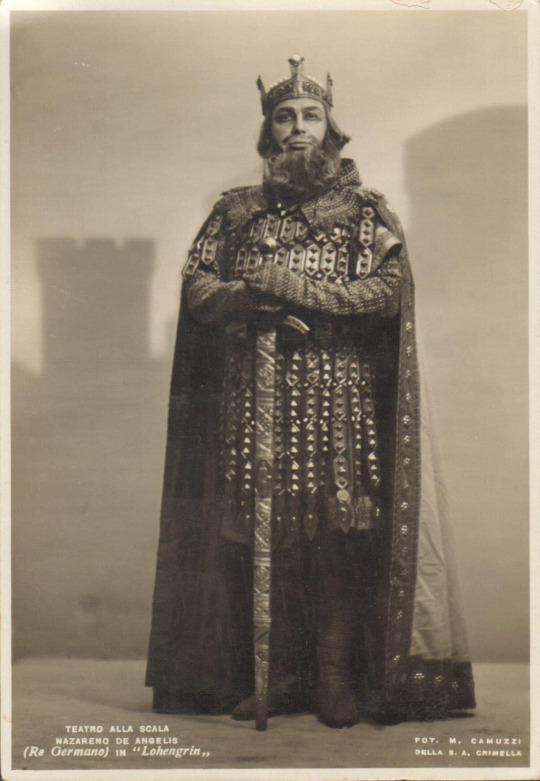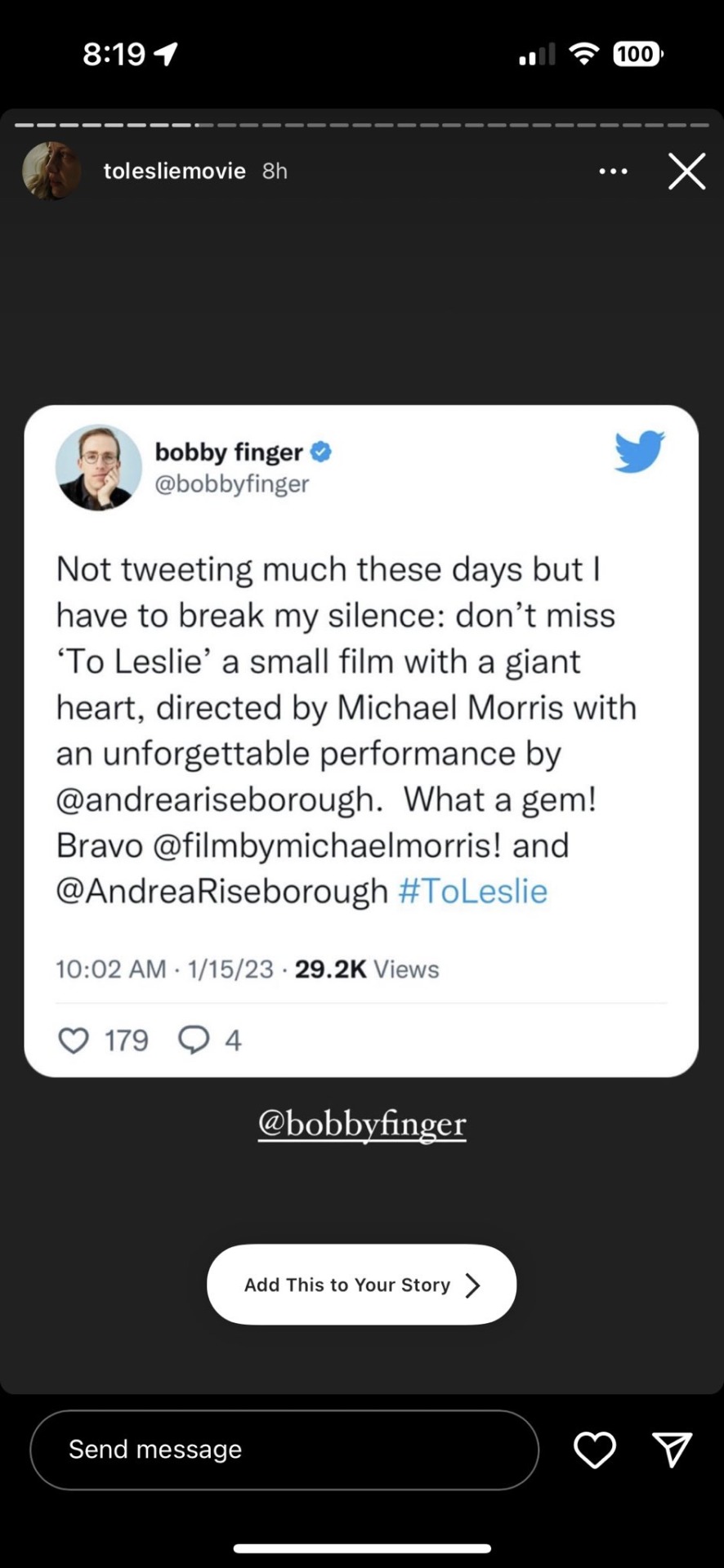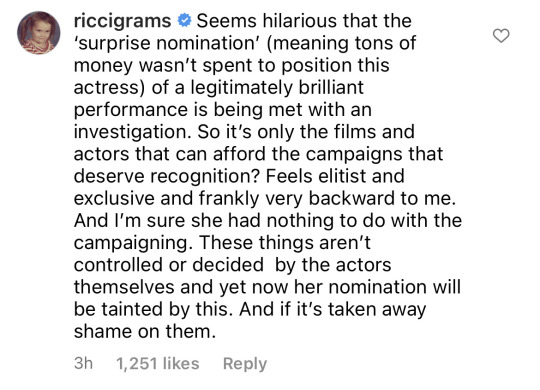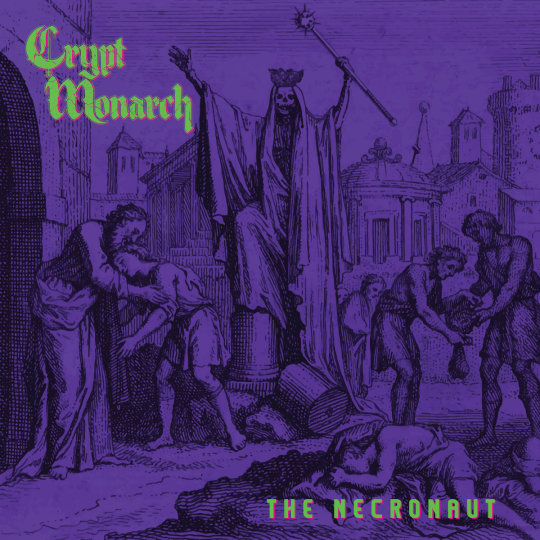#zuniga is a king
Text





Some backgrounds I painted for "The Big Wish" episode for We Baby Bears 🌟
BG Designs by Cristina Zuniga
Color Supervision by Melissa King
Art Direction by Valerie Schwarz
29 notes
·
View notes
Text

Here we see the Italian bass Nazzareno de Angelis (1881 – 1962) as King Henry from Lohengrin. I love the imposing costume and regal pose.
De Angelis was born at L’Aquila on 17 November, 1881 and began his musical life as a boy soprano, first with local choirs, then at the Capella Sistina in the Vatican. After his voice lowered, he studied with one Dr. Faberi at the Accademia di Santa Cecilia in Rome. For several years, he and his mentors wondered about his true vocal placement, and he studied both baritone and bass scores with equal intensity. The top of his voice was tremendous, but it became increasingly clear that it was centred where kings, prophets and devils live. His last two years at the Accademia were spent developing repertoire, and he gave several recitals there before making his opera début at the Comunale of L’Aquila in May of 1903 in Linda di Chamounix, followed by an opera called“L’Educate di Sorrento, by E. Usiglio, at the same theatre.
Hearing of his enormous success the management of Rome’s Teatro Quirino immediately engaged him, and, in early July, he débuted in Norma. He subsequently appeared at the Teatro Adriano as Il Spettro in Hamlet, to the Ofelia of Maria Barrientos and the Hamlet of Battistini, followed by Rigoletto and Tosi Orsini’s Yanthis. In 1904, after some twelve performances of La Gioconda at the Teatro Lirico of Milan, he appeared at Santa Maria Capua Vetere as Colline and at the Quirino in La Favorita, Il Barbiere di Siviglia (Basilio), Carmen (Zuniga), Ernani, Norma and Rigoletto. Carlo Galeffi was his Rigoletto in several performances. He toured the Netherlands from December of 1904 to May of 1905, singing such diverse roles as Dr. Grenvil in La Traviata, Zuniga in Carmen, Sparafucile in Rigoletto, Ferrando in Il Trovatore, Fouquier-Tinville in Andrea Chénier, Tom in Un Ballo in Maschera, Angelotti in Tosca, Basilio and Raimondo in Lucia di Lammermoor. The company gave performances in Amsterdam, Rotterdam and The Hague.
In the Autumn of 1905 he appeared at Mirandola in La Gioconda, at Parma’s Teatro Reinach in Rigoletto and Faust, and at Cagliari’s Teatro Regina Margherita as Alvise, along with those first historic performances of Mefistofele. Gaspare Nello Vetro’s Teatro Reinach says of his Faust Mefistofele: “The young Nazzareno De Angelis, now at the outset of his career, received the greatest applause and had to repeat ‘Dio dell’ Or’ at every performance.” At Cagliari, after his first performance of Boito’s Devil, the applause was interminable and it immediately led to a contract at Bari’s very important Teatro Petruzzelli, where he added Lohengrin and Iris to his roster of operas.
In the Spring of 1906 he left on his first South American tour, appearing at Santiago de Chile and Valparaiso from June to November. He sang nine roles to enormous success. On 16 August, the region was stunned by an earthquake so severe that performances had to be suspended until 1 September. The opera house at Valparaiso was almost completely destroyed, and it was there that the greatest damage occurred. Hundreds of people died, and the wounded numbered in the thousands. Despite recurring after-shocks, the season eventually returned to normal and, in addition to his scheduled performances, he participated in several hastily arranged benefits for earthquake victims. Among his new assignments were Ludovico to the commanding Otello of Antonio Paoli, and Marcel in Gli Ugonotti. His receptions were increasingly enthusiastic, and, before the season ended, he happily agreed to return. That agreement was honoured in both 1908 and 1909. El Mercurio said of him: “…. at the end of the Prologue to Mefistofele, De Angelis received a huge and most sincere ovation.” A later review stated that “he has reminded us again as Mefistofele how superb an artist he is, and in Germania has made us marvel at his versatility in this new role”.
The 1908 season saw him in eight operas including Gli Ugonotti with Hariclea Darclee, and in 1909, he sang nine roles including the creator part of Aquilante in Gloria After his appearances at Santiago, he is thought to have sung in Buenos Aires at the Teatro Coliseo, but no details have been unearthed about his roles during that engagement. He returned to the South American continent in 1910, 11, 12, 14, 19 and 1926, and he appeared in Buenos Aires, Rosario, Montevideo, Rio de Janeiro and São Paolo. He sang Mefistofele in every theatre at which he appeared, and in every season, except for 1914. The list of operas he performed in South America only is long: Tannhäuser, La Sonnambula, I Puritani, Gomes’s Il Guarany and Salvator Rosa, Galitsky in Prince Igor (his only Russian opera, though sung in Italian), Les Huguenots (also in Italian), de Campos’s Um Caso Singular, Verdi’s Otello and Franchetti’s Germania.
On 15 January, 1907 he débuted at La Scala as Alvise in La Gioconda and appeared for the first time in Tristan und Isolde, La Wally and as Aquilante de Bardi in the world premiere of Cilea’s Gloria. Despite recurring arguments with the theater’s management, including one four year hiatus, he would sing twenty four roles over twelve seasons. The year offered two other very important debuts, Alvise at the Teatro Verdi of Firenze with Eugenia Burzio, and King Marke at Bologna’s Teatro Comunale with Amelia Pinto, Giuseppe Borgatti and Giuseppe Pacini. Tristan und Isolde received fifteen performances and was followed by De Angelis’ only appearances in Tschaikovsky’s Iolanthe.
1908 brought with it the beginning of his Scala partnership with Ester Mazzoleni. They first appeared in Franchetti’s Cristoforo Colombo conducted by Toscanini in a run of 16 performances, followed by a revival of La Forza del Destino. Mazzoleni described the event:
You will not be able to imagine what happened on that opening night. Icilio Calleja started ‘O tu che in seno agli angeli’ both too soon and out of tune, at which point all hell broke loose in the house. The theatre took on the atmosphere of a bullring, and, as often happens when things are not going well, the audience vented its rage at everything in sight. Both Pasquale Amato and Luisa Garibaldi were booed and hissed without mercy. The only ones who escaped their fury were De Angelis and myself. At the end, after almost collapsing from nervous exhaustion, we received a standing ovation. Notwithstanding our personal success, Toscanini, eyes ablaze, cancelled the remaining performances.
On 19 December, 1908 De Angelis and Mazzoleni appeared in the historic production of Spontini’s La Vestale, a revival that was repeated 16 times, and then travelled to Paris. Verdi’s I Vespri Siciliani was next in the list of successes, and, on 30 December, 1909, they caused a sensation in Cherubini’s Medea. In March 1910, they appeared in what was to be their last opera together, Meyerbeer’s L’Africaine. This unbroken string of personal triumphs is one of the most legendary of all stories associated with the Milan theatre. Among other memorable evenings at La Scala was the world première of Montemezzi’s L’Amore dei Tre Re on 10 April, 1913 in the role of Archibaldo, which he later premièred at the Colón of Buenos Aires, the Costanzi of Rome, Rio de Janeiro, São Paolo and Trieste’s Teatro Verdi.
Of his Archibaldo in the Rome première of L’Amore dei Tre Re, Il Tempo, on 15 March, 1919, said: “De Angelis, the old lion, he of the pungent, powerful voice, sang the ideal performance of Montemezzi’s king.”
Most of 1910 was spent in the Western Hemisphere. On 31 May De Angelis debuted at Buenos Aires’ Teatro del Opera in Lohengrin with Salomea Krusceniski, Luisa Garibaldi, Dygas and Riccardo Stracciari ,and he completed his season in Aida with Giannina Russ, Garibaldi, and Giovanni Zenatello, Norma with Russ, Garibaldi and Dygas, Mefistofele with Krusceniski and Dmitri Smirnov and Gotterdammerung with Krusceniski and Dygas. In August, the company visited Montevideo for a three week season. after which De Angelis traveled to Chicago for his only performances in the United States.
On 3 November, 1910 he sang in the inaugural performance of the Chicago Civic Opera Company as Ramfis. The cast included Karolewicz, de Cisneros, Bassi, Sammarco and Dufranne. He subsequently sang Colline in La Boheme with John McCormack, Raimondo in Lucia di Lammermoor and Ashby in La Fanciulla del West. On 18 January 1911, in a closing night gala, he appeared as Ashby with Carolina White, Caruso and Sammarco. It is curious that De Angelis accepted a contract with Chicago for roles so small when he had already become the most important bass at La Scala and in many of South America’s theatres. Perhaps the heady company that he would be keeping attracted him; that, with the hope that other more important roles would come his way. He visited several other cities, but, outside of a single appearance in Fanciulla del West at Milwaukee in November.
Upon his return to Italy, De Angelis prepared for the most important début of his career: the Costanzi of Rome. The theatre was to present a gala ‘Musical Exposition’ of opera and ballet in celebration of the fiftieth anniversary of the declaration of the Kingdom of Italy. Among the notable events were the company premières of Verdi’s Macbeth and Donizetti’s Don Sebastiano and the Italian première of La Fanciulla del West, with Eugenia Burzio and Giovanni Martinelli. Serge Diaghilev’s Ballet Russe presented local premières of Les Sylphides and Giselle with Nijinsky, and Toscanini conducted several of the operas. In the midst of this carnival of riches, on 16 April, 1911, De Angelis débuted as Don Basilio with the stellar cast of Graziella Pareto, Umberto Macnez, Titta Ruffo and Giuseppe Kaschmann. The theatre was packed with family, friends, colleagues from his days at the Vatican and the Conservatorio, and former teachers. Dal Costanzi all’Opera states that “it was an evening of surpassing grandeur, refinement and polish, a performance beyond any criticism”. Il Giornale d’Italia reported that “De Angelis convinced a highly expectant audience that he is truly an artist of the first rank….The tumultuous applause that greeted the singers became a roar each time that he appeared before the great curtain”. He was to tell Paolo Silveri many years later that it was the most emotionally satisfying evening of his career. The bond between singer and city had been permanently cemented and he would return in thirteen additional seasons in seventeen roles.
On 23 May, De Angelis debuted at the Teatro Colon in Buenos Aires as the Landgrave in Tannhauser with Pasini-Vitale, Ferrari-Fontana and De Luca. He sang in ten operas, including his first performances in Don Carlo with Agostinelli, Garibaldi, Constantino and Ruffo, La Sonnambula with Barrientos and Bonci and I Puritani with Barrientos, Bonci and De Luca. The Colon hosted him the following year in seven operas, including his only performances as Friar Lawrence in Gounod’s Romeo et Juliette with Lucrezia Bori and Giuseppi Anselmi. De Angelis sang at the Colon for the last time in 1914, but he returned to Buenos Aires in 1919 as Basilio, Mefistofele, Galitzky, Mose and Archibaldo at the Teatro Coliseo.
On 10 October, De Angelis sang Mefistofele at the Costanzi for the first time, and it would be the defining event of his career. The first night audience cheered for nearly an hour and the next day’s reviews were among the most laudatory ever seen:
Mefistofele at Rome - Il Corriere d’Italia - 11 October, 1911. “This singer and magnificent actor can truly claim to be the greatest basso currently on the lyric stage. Extraordinary power, an excellent voice, clear and perfect diction and impeccable technique were all completely confirmed last night. His success was enormous.”
His triumph was reported on the front page of newspapers throughout Italy and he was immediately asked to sing the role in virtually every Italian theatre. Within four months he had débuted at Turin’s Regio, Trieste’s Verdi and the San Carlo of Naples, where he sang fourteen performances of the opera. Barcelona’s Liceo received him with enormous acclaim in April of 1913 and Mefistofele was to serve as his debut role at Venice’s Fenice, Genoa’s Carlo Felice and Politeama, Brescia’s Grande, Padua’s Verdi, Palermo’s Massimo and the Verona Arena. In 1918, De Angeles sang the role for the first time at La Scala with Linda Cannetti, Elena Rakowska and Gigli, and, in 1920, at Milan’s Dal Verme, he appeared in some fifteen performances of the opera with Hina Spani as Margherita. It was so overwhelming a part of his career, that in 1923, it was the only role he sang.
On 4 April, 1915, he sang Mosè for the first time, appearing at Rome’s Teatro Quirino and took the role to Firenze, Livorno’s Teatro Goldoni, the Comunale of Bologna and Milan’s Dal Verme. The cast included Giannina Russ, Adele Ponzano, Luigi Pieroni and Alessandro Dolci, and was conducted by Mascagni. The tour was among the very few performances he gave between the Spring of 1915 and the Winter of 1918. A 1916 press release from the Teatro Municipal of Santiago, Chile notes that, because he was serving in the Italian armed forces, he would not be able to appear. He returned to the stage at Rome’s Costanzi in February, 1918, and sang Mosè there on 23 April.
Mosè - 2 June, 1918 - Rome Dal Costanzi all’Opera. “On the closing night, which presented the tenth performance of Mosè, De Angelis achieved one of the greatest successes of his career.”
La Tribuna said: “The great bass received an ovation perhaps without parallel in memory. His performance was of monumental proportions, and the audience responded in kind.”
Over the next several years, De Angelis sang Mose at La Scala, Buenos Aires, Rosario, Montevideo, Rio de Janeiro, Sao Paolo, Bergamo, Genoa, Ferrara, Trieste, Turin, Ancona, and, for the last time in 1925 at the Verona Arena.
Although De Angelis’ stage debut was in Linda di Chamounix, Donizetti and Bellini seem not to have been composers for whom he felt much affinity. In 1911, he sang in La Sonnambula and I Puritani at the Colón of Buenos Aires and, on the closing night of the 1926 season at Rio de Janeiro, he sang one additional lonely performance of I Puritani. By 1912, he had stopped singing in La Favorita and Lucia di Lammermoor and seems never to have appeared in a Donizetti opera again. He sang important revivals of Norma with Giannina Russ, Claudia Muzio, Vera Amerighi-Rutili, Bianca Scacciati and Iva Pacetti, but they were few in number and widely separated in time.
Lucia di Lammermoor at Buenos Aires - La Prensa - 27 May, 1911 Though the soprano role is the centrepiece of this opera, Barrientos’s grand companions, Constantino, Ruffo and De Angelis were all triumphant.
Norma at Rome - Il Tevere - 28 December, 1928 The evening confirmed the triumph of Norma, and of Muzio, Luisa Bertana, the tenor Mirassou and Nazzareno De Angelis, who conferred, with beauty of voice and physical presence, the ultimate realization of Oroveso.
Don Basilio in Il Barbiere di Siviglia was a very important role in De Angelis’s career, and he sang it in both the largest and smallest theatres. In the Spring of 1916 he toured among Parma’s Regio, Naples’ San Carlo, Pisa’s Verdi, Pesaro’s Salon Pedrotti and Rome’s Quirino in commemoration of the 100th anniversary of the opera’s premiere. The cast for the performances was Fanny Anitua as Rosina; Carpi and Macnez sang Almaviva; Galeffi portrayed Figaro and Kaschmann, Bartolo. At Rome, the cast included de Hidalgo, Salvati and De Luca. He sang it at the Costanzi in 1919 and garnered his usual superlatives.
Il Barbiere di Siviglia at Rome - Il Messagero - 16 February, 1919 “This old opera rarely has one divo, fewer times two, but tonight there were four, de Hidalgo, Schipa, Galeffi and De Angelis, truly an Olympus of singers. It was a marvellous evening, one which made us almost believe that we were seeing the opera for the first time. The soloists sang as though inspired by some magic spirit.”
In 1919, De Angelis toured to Buenos Aires, Montevideo, Rio de Janeiro and Sao Paolo as Basilio with Angeles Ottein, Tito Schipa and Armand Crabbe. It was on this tour that he appeared in Prince Igor, Il Guarany and Salvator Rosa for the only times in his career. In 1921 he appeared as Basilio at Spoleto with the inimitable Conchita Supervia and in 1922 he appeared in a lavish production at La Scala with de Hidalgo, Hackett and Galeffi. In 1925 he made both his Swiss debut and farewell as Basilio at Lugano.
His Wagner roles were seven: King Marke in Tristan und Isolde, Wotan in both Das Rheingold and Die Walküre, King Henry in Lohengrin, Hagen in Götterdämmerung, the Landgrave in Tannhäuser and Gurnemanz in Parsifal. In 1914, he sang Gurnemanz an amazing twenty seven times during La Scala’s first season of Parsifal and premièred the opera at Buenos Aires’s Teatro Colón the following May. In January 1922, he returned to La Scala for eleven performances in a cast that included Helene Wildbrunn, Amadeo Bassi, and on the fourth night, the debut at that theater of Apollo Granforte. He appeared at Paris as Gurnemanz in May of the same year. De Angelis appeared in Die Walkuere at Rome, La Scala, Naples, Rio de Janeiro and Sao Paolo and in Das Rheingold at Bologna, Rome and La Scala. In the winter of 1938 at Rome, he sang Wotan in Das Rheingold and Die Walküre, as well as Hagen, in the first ‘Ring’ ever performed completely in Italian. The undertaking was supervised by Tullio Serafin and the four operas were broadcast throughout Italy. De Angelis’ last Wagner performances were as Gurnemanz at the San Carlo of Naples in April, 1938.
Of his performances in the 1938 ‘Ring’at Rome, the following reviews are quoted.
Il Messagero, 25 January - Das Rheingold De Angelis sang with enormous resonance. His achievement was hard to imagine, sung with the greatest of expression, vigour and vibrancy.
Il Piccolo, 27 January - Die Walkuere He maintained a level of excellence throughout this very long and difficult role that was exceptional.
Among Verdi’s operas, he sang Zaccaria in Nabucco, Silva in Ernani. Ferrando in Il Trovatore, Grenvil in La Traviata, Sparafucile in Rigoletto, Tom in Un Ballo in Maschera, Padre Guardiano in La Forza del Destino, Procida in I Vespri Siciliani, Fiesco in Simon Boccanegra, King Philip in Don Carlo, Ramfis in Aida and Lodovico in Otello. Interestingly, he sang far fewer performances of Verdi than he did of Wagner. In fact, in no Verdi opera, outside of Aida, did he sing more than twenty five performances, and Simon Boccanegra, had only one revival, at La Scala in 1933. It was his last new role.
Aida - Rome - La Tribuna - 6 October, 1911 The Ramfis of Nazzareno De Angelis showed an extraordinarily robust, mellow and vibrant voice.
Nabucco - Rome - La Tribuna - 2 June, 1916 A memorable evening of art, of patriotic love.... in which all the artists offered a spectacle of singular interest. The interpreters, Nazzareno De Angelis in the white robes of the high priest, Zaccaria, Carlo Galeffi, Cecilia Gagliardi and Fanny Anitua gave superb examples of their great art.
Non-operatic appearances were fairly infrequent. He sang in Verdi’s Manzoni Requiem several times, most importantly at La Scala in 1913 under Toscanini’s direction, at Rome’s Teatro Augusteo in both 1913 and 1922, and in 1924 at Vicenza and the Verona Arena. The Verona engagement with Rinolfi, Minghini Cattaneo and Taccani, was so successful that after two performances in the outdoor stadium, an additional two were given at the Teatro Filarmonico with Lucia Crestani singing the soprano music. In May 1938 he returned to the work for the last time when he sang it at Rome’s Teatro Adriano with Caniglia, Stignani and Alessandro Granda. On 4 December 1924, under Toscanini’s direction, he and Hina Spani sang at Giacomo Puccini’s Funeral in the Duomo of Milan, and on the 29th , the program was repeated at La Scala. Among De Angelis’ more interesting concerts were three at Rome’s Teatro Quirino. On 4 April 1915 he appeared with Russ and Battistini in an all Mascagni programme honouring the composer. In September, 1915 he appeared in a composition called Inno alla Patria by Zandonai accompanied by Gabriella Besanzoni, and in June 1916, he sang in Canto di Guerra, written by the great bass-baritone Giuseppe Kaschmann.
De Angelis’ career in Iberia was not impressive. He sang Mefistofele at La Coruña, Spain in 1908 and appeared at Barcelona’s Liceo in the Spring of 1913 as Boito’s Devil. The La Coruña engagement includes a reference to Gounod’s Faust, which, if it were to have happened, would have been an extremely interesting juxtaposition of roles. Perhaps it did. There are announcements of a second engagement at La Coruña in 1912, but I have found no details. It would seem, from the evidence, that he never appeared in Portugal.
By 1927, De Angelis was averaging no more than 20 performances a year, though he continued to make recordings at a prodigious rate. In 1934, his only appearances were as Mefistofele at Piacenza and, about a year later, he sang Oroveso, Gurnemanz and Padre Guardiano at Genoa’s Carlo Felice. After a three-year absence, he returned to Rome’s Teatro Reale in January of 1938 for Mefistofele and the celebrated ‘Ring Cycle’. In August, after a debut at Rome’s Caracalla as Mefistofele, he sang his valediction at Naples’ Arena Flegrea as Boito’s Beelzebub, with Delia Sanzio, Margherita Grandi and Granda. De Angelis had appeared in fifty seven operas and had sung well over fifteen hundred performances.
It has been reported that he gave occasional recitals until about 1942. Upon his eventual retirement, he taught in Milan and, later, at his favorite city, Rome. He died on 14 December, 1962, in Rome, at the age of 81.
#classical music#opera#music history#bel canto#composer#classical composer#aria#classical studies#maestro#chest voice#Nazzareno de Angelis#bass#Lohengrin#Richard Wagner#Wagner#Paris Opéra#La Scala#classical musician#classical musicians#classical voice#classical history#classical art#musician#musicians#music education#music theory#history of music#historian of music#diva#prima donna
4 notes
·
View notes
Text
so I haven’t seen anyone on here unpack the whole Andrea Riseborough oscar controversy yet so fine, I’ll do it myself. bear in mind that I’m not an expert in ANY way this is just what I’ve picked up from a few days of reading so if anyone knows more pls feel free to chime in.
so, the thing about the Academy Award nomination & awards process is that it’s not as simple as the best actress or movie gets the award — it involves campaigning on the part of the studios/actors/etc. that’s just how it is and all of the best actress nominees had campaigns going on. but there was some weird things going on with Riseborough’s campaign (for her starring role in extremely low budget indie To Leslie). for one, how so many famous people seemingly randomly started caping for her, as reported in the Hollywood reporter:
Jennifer Aniston, Charlize Theron, Sarah Paulson and Edward Norton have hosted screenings, with more recent showings booked by Gwyneth Paltrow and Courteney Cox. After Paltrow’s screening, attended by the likes of Demi Moore along with Morris and Riseborough in attendance, the Goop founder called it a “masterpiece of a film” and went so far as to say that the title star should win “every award there is and all the ones that haven’t been invented yet.”
Many more have also posted about it on social media including Aniston (“Beautiful”), Susan Sarandon (“beautiful, lil gem of a film”), Helen Hunt (“If you’re out there voting for performances, don’t do it till you see Andrea Riseborough”), Zooey Deschanel (“amazing movie”), Melanie Lynskey (“even for her this is next level”), Mira Sorvino (“absolutely stunning, wrenching and beautiful”), Constance Zimmer (“you’ll never forget this performance”), Rosie O’Donnell (“devastatingly beautiful film”), Minnie Driver (“run don’t walk”), Alan Cumming (“an insanely raw and beautiful performance”) Daphne Zuniga (“incredible performance”), Tan France, Jenny McCarthy and many more. Frances Fisher, Rosanna Arquette, Debra Winger, Patricia Clarkson and Howard Stern are also part of the chorus of supporters.
even weirder, there were quite a few tweets that used the exact same wording, calling it a “small film with a giant heart”, providing pretty clear evidence that this was all part of a campaign.




now, as mentioned, campaigning IS fine and normal. but the fact that this campaign came so suddenly and so quickly in the run up to the nominations (as opposed to others who had been campaigning and had their names in the running for months before) raised a few eyebrows. another thing that raised a few eyebrows was the number of people (mostly famous white woman) who came out of the woodwork gushing about this movie and performance, treating Riseborough as the underdog contender that they just had to vocally support because she would never get as much attention as the others otherwise. (many are calling it a grassroots campaign — which seems like a weird way to refer to a bunch of millionaires deciding to throw their support behind something).
quote from sarah paulson:
Movies like this, made for little money, that are this powerful and true, should be given the same attention and consideration as those that have huge studios and therefore budgets behind them. Anything I could do to help bring eyes to it would mean I was doing something for all of us as actors and moviegoers.
cate blanchett literally used her speech after winning the critic’s choice awards to shout out Riseborough and call her “overlooked”.
And all of that is like… weird, but fine, I guess? Until you consider the fact that this was looking to be a historically diverse batch of nominees. Not only was Michelle Yeoh the first Asian nominees, Viola David and Danielle Deadwyler were both considered by many to be lock-in nominees for their movies The Woman King and Till. The fact that an army of white women came out in their droves to talk about how overlooked low budget indie movies are and to claim that this one specific white actress was the best one ever on the exact year that three women of colour looked like they might be getting nominated looks questionable, at best. Sure, some people did probably just praise the movie because they thought it was good and there was a lot of sudden hype around it. But some of the excess praise seems coupled with the constant framing of Riseborough as the underdog feels suspicious.
and now, the Academy is investigating Riseborough’s campaign because there’s suspicion their laws may have been broken as part of her campaign (which would result in her nom being rescinded). One seemingly obvious case of rules being broken would be Frances Fisher’s instagram post:

which goes against the rule that you are NOT allowed to mention any competitor while campaigning. if there is evidence that this post was part of Riseborough’s campaign (i.e. that she was in communication with Riseborough or her team about promoting the movie), that could be pretty damming.
but yet she is STILL being treated as the underdog victim in this — despite having a horde of rich and powerful Hollywood connections caping for her. see: comment from christina ricci:

it remains to be seen what will come of this all, but unfortunately, even if Riseborough’s nomination IS rescinded, it seems that they will not replace her with another nominee and there will instead only be four for that category.
6 notes
·
View notes
Text

Saint of the day August 19
ST. MAGNUS, MARTYR IN LATIUM-https://en.wikipedia.org/wiki/Magnus_of_Anagni#:~:text=Magnus%20fled%20to%20Rome%20to,near%20Fabrateria%20Vetus%2C%20in%20Latium.
St. Andrew the Tribune, The "Great Martyr," and the leader of converts in the Roman army, his men faced a battle with a Persian host. Calling upon Christ for aid, the Romans were victorious. Andrew and some of his troops became Christians as a result and were discharged from military service. they were arrested by the military governor and executed in the Taurus Mountains of Cilicia. .Aug. 19
https://en.wikipedia.org/wiki/Andrew_Stratelates#:~:text=Andrew%20Stratelates%2C%20also%20known%20as,Orthodox%20Church%20on%2019%20August.
Bl. Peter Zuniga, Roman Catholic Priest and Martyr of Japan. A Spaniard from Seville, he grew up in Mexico, where his father was the sixth Viceroy of the Spanish colony. Upon his return to Spain, he joined the Augustinians, and, after ordination, he requested to be sent to Japan and the missions there. Going first to the Philippines in 1610, he was later assigned to Japan, arriving there in 1620. Two years later, he was arrested and, with Blesseds Louis Flores, Joachim, Firayama, and the captain and crew which had transported them, was put to death. The crew was beheaded while the others were burned alive. Feastday Aug. 19 https://www.augustinian.org/saints-1/september-28
Bl. Bartholomew Monfiore, Bl. James Denshi, Bl. Paul Sanchiki, Roman Catholics and martyrs of Japan. Japanese crew members of Blessed Joachim Firayama's ship. Arrested for his Christian faith, he was beheaded at Nagasaki. Feastday Aug. 19
https://en.wikipedia.org/wiki/205_Martyrs_of_Japan
Bl. John Foyamon, Roman Catholic Martyr of Japan. A scribe on the ship carrying Blessed Peter Zufliga, he was beheaded at Nagasaki with Blesseds John Yano and John Nangata. Feastday Aug. 19
https://en.wikipedia.org/wiki/205_Martyrs_of_Japan
Bl. Thomas Koyanangi, Roman Catholic Japanese martyr. Arrested as a passenger on the ship of Blessed Joachim Firayama-Diz, he was beheaded at Nagasaki, Feastday Aug. 19
https://en.wikipedia.org/wiki/205_Martyrs_of_Japan
Bl. Michael Diaz, A martyr of Japan. He was a Spanish merchant on board the Japanese ship carrying Blessed Joachim Firayama. Michael and others were arrested by Protestant Europeans who turned them over to the Japanese authorities. Everyone on the ship was martyred at Nagasaki. Aug. 19 https://en.wikipedia.org/wiki/205_Martyrs_of_Japan
St. Mochta, 535 A.D. Bishop of Ireland. He was born in Britain but was brought to Ireland as a child. There he became a disciple of St. Patrick. During a visit to Rome, Mochta was made a bishop by Pope St. Leo I. He founded Louth Monastery with twelve companions and was probably consecrated by St. Patrick. He died at the age of ninety, the last known disciple of St. Patrick.
https://en.wikipedia.org/wiki/Mochta
St. Sebald, 770 A.D. Patron Saint of Nuremberg. Hermit, missionary, and a patron saint of Nuremberg. Most likely an Anglo-Saxon from England, he arrived on the Continent and became a hermit near Vicenza, Italy, and then participated in the missionary enterprise of the times, assisting in the work. of St. Willibald in the Reichswald. Many miracles were attributed to him, including turning icicles into firewood. https://en.wikipedia.org/wiki/Sebaldus
St. Credan, 780 A.D. A Benedictine abbot of Evesham, England, in the reign of King Offa of Mercia. https://en.wikipedia.org/wiki/Credan
ST. JOHN EUDES, PRIEST, FOUNDER OF THE EUDISTS, https://www.catholicapostolatecenterfeastdays.org/feast-days-and-solemnities/st-john-eudes#:~:text=Jesus%20and%20Mary-,St.,and%20the%20Blessed%20Virgin%20Mary.
ST. SIXTUS III, POPE, https://en.wikipedia.org/wiki/Pope_Sixtus_III
0 notes
Text

1. de Knijff P, Kayser M, Caglià A, Corach D, Fretwell N, Gehrig C, et al. Chromosome Y microsatellites: population genetic and evolutionary aspects. Int J Legal Med. 1997; 110(3):134–149. PMID: 9228564.
2. Jobling MA, Pandya A, Tyler-Smith C. The Y chromosome in forensic analysis and paternity testing. Int J Legal Med. 1997; 110(3):118–124. PMID: 9228562.
3. Jobling MA, Tyler-Smith C. The human Y chromosome: an evolutionary marker comes of age. Nat Rev Genet. 2003; 4(8):598–612. PMID: 12897772.
4. Ballantyne KN, Goedbloed M, Fang R, Schaap O, Lao O, Wollstein A, et al. Mutability of Y-chromosomal microsatellites: rates, characteristics, molecular bases, and forensic implications. Am J Hum Genet. 2010; 87(3):341–353. PMID: 20817138.
5. Ballantyne KN, Keerl V, Wollstein A, Choi Y, Zuniga SB, Ralf A, et al. A new future of forensic Y-chromosome analysis: rapidly mutating Y-STRs for differentiating male relatives and paternal lineages. Forensic Sci Int Genet. 2012; 6(2):208–218. PMID: 21612995.
6. Ballantyne KN, Ralf A, Aboukhalid R, Achakzai NM, Anjos MJ, Ayub Q, et al. Toward male individualization with rapidly mutating Y-chromosomal short tandem repeats. Hum Mutat. 2014; 35(8):1021–1032. PMID: 24917567.
7. Bredemeyer S, Roewer L, Willuweit S. Next generation sequencing of Y-STRs in father-son pairs and comparison with traditional capillary electrophoresis. Forensic Sci Res. Forthcoming. 2021; DOI: 10.1080/20961790.2021.1898078.
8. Alghafri R, Goodwin W, Ralf A, Kayser M, Hadi S. A novel multiplex assay for simultaneously analysing 13 rapidly mutating Y-STRs. Forensic Sci Int Genet. 2015; 17:91–98. PMID: 25884342.
9. Adnan A, Ralf A, Rakha A, Kousouri N, Kayser M. Improving empirical evidence on differentiating closely related men with RM Y-STRs: a comprehensive pedigree study from Pakistan. Forensic Sci Int Genet. 2016; 25:45–51. PMID: 27497645.
10. Park MJ, Lee HY, Chung U, Kang SC, Shin KJ. Y-STR analysis of degraded DNA using reduced-size amplicons. Int J Legal Med. 2007; 121(2):152–157. PMID: 17106735.
11. Fattorini P, Previderé C, Carboni I, Marrubini G, Sorçaburu-Cigliero S, Grignani P, et al. Performance of the ForenSeqTM DNA Signature Prep kit on highly degraded samples. Electrophoresis. 2017; 38(8):1163–1174. PMID: 28078776.
12. Müller P, Sell C, Hadrys T, Hedman J, Bredemeyer S, Laurent FX, et al. Inter-laboratory study on standardized MPS libraries: evaluation of performance, concordance, and sensitivity using mixtures and degraded DNA. Int J Legal Med. 2020; 134(1):185–198. PMID: 31745634.
13. Churchill JD, Schmedes SE, King JL, Budowle B. Evaluation of the Illumina® Beta Version ForenSeq™ DNA Signature Prep Kit for use in genetic profiling. Forensic Sci Int Genet. 2016; 20:20–29. PMID: 26433485.
14. Gettings KB, Borsuk LA, Steffen CR, Kiesler KM, Vallone PM. Sequence-based U.S. population data for 27 autosomal STR loci. Forensic Sci Int Genet. 2018; 37:106–115. PMID: 30144646.
15. Huszar TI, Jobling MA, Wetton JH. A phylogenetic framework facilitates Y-STR variant discovery and classification via massively parallel sequencing. Forensic Sci Int Genet. 2018; 35:97–106. PMID: 29679929.
16. Kim SY, Lee HC, Chung U, Ham SK, Lee HY, Park SJ, et al. Massive parallel sequencing of short tandem repeats in the Korean population. Electrophoresis. 2018; 39(21):2702–2707. PMID: 30084488.
17. Kwon SY, Lee HY, Kim EH, Lee EY, Shin KJ. Investigation into the sequence structure of 23 Y chromosomal STR loci using massively parallel sequencing. Forensic Sci Int Genet. 2016; 25:132–141. PMID: 27591816.
18. Kwon YL, Kim BM, Lee EY, Shin KJ. Massively parallel sequencing of 25 autosomal STRs including SE33 in four population groups for forensic applications. Sci Rep. 2021; 11(1):4701. PMID: 33633141.
19. Phillips C, Devesse L, Ballard D, van Weert L, de la Puente M, Melis S, et al. Global patterns of STR sequence variation: sequencing the CEPH human genome diversity panel for 58 forensic STRs using the Illumina ForenSeq DNA Signature Prep Kit. Electrophoresis. 2018; 39(21):2708–2724. PMID: 30101987.
20. Purps J, Siegert S, Willuweit S, Nagy M, Alves C, Salazar R, et al. A global analysis of Y-chromosomal haplotype diversity for 23 STR loci. Forensic Sci Int Genet. 2014; 12(100):12–23. PMID: 24854874.
21. Woerner AE, King JL, Budowle B. Fast STR allele identification with STRait Razor 3.0. Forensic Sci Int Genet. 2017; 30:18–23. PMID: 28605651.
22. Lee EY, Lee HY, Kwon SY, Oh YN, Yang WI, Shin KJ. A multiplex PCR system for 13 RM Y-STRs with separate amplification of two different repeat motif structures in DYF403S1a. Forensic Sci Int Genet. 2017; 26:85–90. PMID: 27816850.
23. Phillips C, Gettings KB, King JL, Ballard D, Bodner M, Borsuk L, et al. “The devil’s in the detail”: release of an expanded, enhanced and dynamically revised forensic STR sequence guide. Forensic Sci Int Genet. 2018; 34:162–169. PMID: 29486434.
24. Novroski NM, King JL, Churchill JD, Seah LH, Budowle B. Characterization of genetic sequence variation of 58 STR loci in four major population groups. Forensic Sci Int Genet. 2016; 25:214–226. PMID: 27697609.
25. Watahiki H, Fujii K, Fukagawa T, Mita Y, Kitayama T, Mizuno N. Polymorphisms and microvariant sequences in the Japanese population for 25 Y-STR markers and their relationships to Y-chromosome haplogroups. Forensic Sci Int Genet. 2019; 41:e1–e7. PMID: 30948258.
26. Park MJ, Lee HY, Yang WI, Shin KJ. Understanding the Y chromosome variation in Korea--relevance of combined haplogroup and haplotype analyses. Int J Legal Med. 2012; 126(4):589–599. PMID: 22569803.
27. Lang M, Liu H, Song F, Qiao X, Ye Y, Ren H, et al. Forensic characteristics and genetic analysis of both 27 Y-STRs and 143 Y-SNPs in Eastern Han Chinese population. Forensic Sci Int Genet. 2019; 42:e13–e20. PMID: 31353318.
28. Yin C, Su K, He Z, Zhai D, Guo K, Chen X, et al. Genetic reconstruction and forensic analysis of Chinese Shandong and Yunnan Han populations by co-analyzing Y chromosomal STRs and SNPs. Genes (Basel). 2020; 11(7):743.
29. Verogen. ForenSeq DNA signature prep reference guide. Updated 2020. Accessed August 2, 2021. https://verogen.com/wp-content/uploads/2020/08/forenseq-dna-signature-prep-reference-guide-VD2018005-c.pdf .
30. Promega. PowerSeq® 46GY system. Updated 2021. Accessed August 2, 2021. https://promega.widen.net/s/zwjslklfvk/alternate-powerseq-46gy-protocol-application-note-an365 .
0 notes
Text
‘Four Kings and A Queen’ to thrill music lovers at Resorts World Manila on Aug. 26-27 – Manila Bulletin
‘Four Kings and A Queen’ to thrill music lovers at Resorts World Manila on Aug. 26-27 – Manila Bulletin
‘Four Kings and A Queen’ to thrill music lovers at Resorts World Manila on Aug. 26-27
From left: Rey Valera, Nonoy Zuniga, Pops Fernandez, Marco Sison and Hajji Alejandro
Live concerts are truly back in Resorts World Manila (now known as Newport World Resorts), and we are thrilled to invite you to be part of this resurgence as we bring together on stage five of the country’s legendary…

View On WordPress
0 notes
Text
Stop Cop City + Intl Day of Solidarity with Antifascist Prisoners
Stop Cop City +David Campbell on Antifascist Prisoners
This week’s episode features two interviews.
Transcript
Stop Cop City / Defend Atlanta Forest
David Campbell on Antifascist Prisoners - pending
PDF (Unimposed) - pending
Zine (Imposed PDF) - pending
Stop Cop City / Defend the Atlanta Forest
First up, the struggle to Defend the Atlanta Forest and Stop Cop City has been gaining momentum over the last year, in opposition to the building of what would be the largest police urban training center in the so-called USA in the wake of the 2020 George Floyd Uprising, alongside the construction of what would be the country’s largest film sound stage for Blackhall Studios. Coming up, you’ll hear Tony Lane of Defend Atlanta Forest talk about some of the issues involved, the ongoing organizing to stop the destruction of dozens of acres in this forest in the city in the forest, the ongoing info-tours around the country and upcoming week of action from July 23-30th, 2022.
https://atlpresscollective.com/
https://www.mainlinezine.com/cop-city-and-the-prison-industrial-complex-in-atlanta/
https://StopReevesYoung.com
https://scenes.noblogs.org/post/2022/06/17/4th-week-of-action-july-23-30/
David Campbell on Supporting Antifascist Prisoners
Then, you’ll hear an interview with formerly incarcerated antifascist prisoner, David Campbell, about his experience of incarceration for participation a street melee against fascists in January 2018 in New York City and about the importance of prisoner support and the upcoming annual International Day of Solidarity with Antifascist Prisoners on July 25th.
David's former celly who could use some love:
Bruce Williams #21R0721
Orleans Correctional Facility
3531 Gaines Basin Rd
Albion, NY 14411
David's links:
Twitter: @ab_doc
Patreon: https://www.patreon.com/davidcampbelldac
huffpo David Campbell article: https://www.huffpost.com/entry/antifa-rikers-island-jail_n_6107f59be4b0f9b5a235ce77/amp
Antifascist Political Prisoner Support Sites:
International Antifascist Prisoner Defence Fund: https://intlantifadefence.wordpress.com/
suggestions on supporting antifa prisoners: https://supportantifaprisoners.wordpress.com
PrisonerSolidarity.Com
ABC-F Warchest: https://www.abcf.net/
NYC ABC: https://nycabc.wordpress.com
ABC Dresden: https://abcdd.org/en/
ABC Belarus: https://abc-belarus.org/?lang=en
ABC Moscow: https://wiki.avtonom.org/en/index.php/Contacts_of_Anarchist_Black_Cross_Moscow
Specific Antifa Prisoners Mentioned:
Dan Baker: https://prisonersolidarity.com/prisoner/dan-baker
an interview we did on his case in 2021
Eric King:
Eric's Support site updates: https://supportericking.org/2022/06/09/fci-englewood-started-erics-adx-transfer-paperwork-before-his-recent-trial-ever-started/
our interviews with Eric (2022, 2019)
Gage Halupowski: https://prisonersolidarity.com/prisoner/gage-halupowski
Lina E (Leipzig, Germany):
support site in German: https://freiheitfuerlina.noblogs.org/
article in English on the case: https://www.theleftberlin.com/prematurely-condemned-the-case-of-lina-e/
David also mentions the Resistance Committee in Ukraine and Operation Solidarity which include participation of anarchists and antifascists resisting the Russian invasion.
Announcements
Jason Walker Transferred, Needs Support
Incarcerated journalist, author and activist, Jason Renard Walker has been transferred to Connolly Unit in Texas’s TDCOJ prison system where he has a reasonable expectation of danger after credible threats of violence of which authorities are aware. There is an article explaining Jason’s situation and how to help at MongooseDistro.Com, which is linked in our shownotes.
Comrade Z Transferred
Comrade Z, anarchist and IWOC organizer in Texas has been transferred and could use a few letters to make him feel at home in the new digs. You can write him at:
Julio A Zuniga 1961551
Wayne Scott Unit
4 Jester Road
Richmond, Texas 77406
Hunger Strike at Granville Correctional in NC
Prisoners at Granville are urgently asking for a mass phone zap to pressure NC DPS and the administration into granting their demands. There is a new phone zap on Tuesday, July 5th as the conditions remain terrible.
Contact:
Warden Roach, 919-575-3070, or [email protected]
Loris Sutton, prisons' central region director, 919-582 6125, or [email protected]
Todd Ishee, commissioner of prisons, 919-838-4000, ask to speak to Todd Ishee, or todd.ishee @ncdps.gov
Demands include:
remove Sgt. Couper, stop the police brutality and harassment
Ask what is the condition of Anthony Harris (#0957565) and the hunger strikers?
Why are hunger strikers and people on self injury watch being isolated with no bunks? does the commissioner know?
Why is Sgt. Couper assaulting prisoners every week or in altercations every day?
Why are you housing people with cancer?
A few tips for calls:
you don't need to give your name or other info
record calls if possible
leave long messages on voicemail
call using *67 to block your number
call multiple times and disrupt their operations
remember that denial and obstruction are standard procedures for those that work there
report any and all info received and forward any questions to: [email protected]
. ... . ..
Featured Tracks:
My Peaceful Forest by Roy Hamilton from Bill Haney's Atlanta Soul Vol. 1
Σιγά μην κλάψω, σιγά μη φοβηθώ by Killah P from Ni Oubli Ni Pardon Vol. 1 (Action Antifasciste Paris-Banlieue)
. ... . ..
Find our socials, contacts and streaming at TFSR.WTF
Support the project and our transcription at TFSR.WTF/Support
Find our growing library of zines and transcripts for reading, distro and translation at TFSR.WTF/Zines
Learn about our radio broadcasts and how to get us on your local station at TFSR.WTF/Radio
Check out this episode!
0 notes
Text
OPERA TAG
Favourite Italian opera: La Rondine/La Boheme (Puccini wrote some gorgeous operas and they make me cry all the time.)
Favourite German-language opera: Salome
Opera with the most nostalgic appeal: Tosca (It was my first opera!)
Favourite French opera: Tales of Hoffman
Opera that makes you cry the most: La Boheme, La Rondine, Tosca, and anything else by Puccini probably.
Favourite English-language opera: The Consul/ The Medium
Favourite comic opera: La Fille du Regiment
Favourite 20th Century opera: The Medium/Wozzek/Sweeney Todd
Favorite pre-classical opera: Alcina
Favourite Mozart opera: La Nozze di Figaro
Favorite Verdi opera: Rigoletto
Favourite Wagner opera: None. That man wrote nothing worth my time.
Most overrated opera: Anything by Wagner.
Favourite operatic heroine: Violetta
Favorite operatic leading male: Zuniga (RB if you agree)
Favourite operatic villain: Salome
Favourite opera for introducing the genre to children: Wozzek (no JK, probably Hansel and Gretel)
Favourite opera to see during the holiday season: La Boheme
Opera you’re embarrassed that you love: H.M.S. Pinafore (It’s an operetta but still)
Opera that has an unfairly bad reputation: Elektra (I don’t care if you think atonal music isn’t music. It is)
Favourite opera that’s a sequel to another opera: Ghosts of Versailles
Favourite silly operatic convention: The soprano mad scene
Opera you could listen to again and again: La Boheme, Sweeney Todd, Lucia di Lammermoor
#;opera#zuniga is a king#opera#can you tell im into modern opera#richard wagner#fight me i cant stand him
1 note
·
View note
Video
youtube
O Worship The King
Classical Praise 3 Piano & Cello | Duration: 3mins 18secs
#O Worship The King#Classical Praise 3 Piano & Cello (album)#Tiffan#Youtube#Tiffany Cardenas Zuniga (channel)#video#Christian Instrumental
6 notes
·
View notes
Text
Slipknot’s Knotfest.com Launches an Exclusive Monthly Beer Subscription Club
Slipknot’s Knotfest.com Launches an Exclusive Monthly Beer Subscription Club
Knotfest.com, the cultural home for metalheads on the web run by the band Slipknot has launched a by-subscription, exclusive monthly beer club! The Knotfest Beer Pit. Inside the pit, you’ll get access to an in-depth tasting experience with the highest quality beers from the most exciting and metal breweries in the world They believe fans of aggressive music deserve aggressive beers. The inaugural…

View On WordPress
#Adroit Theory Brewing Company#Adroit Theory Brewing Company&039;s EBK Hazy Double#Advanced Cicerone® Adam Zuniga#Belching Beaver Brewery&039;s Phantom Bride IPA#Kings County Brewers Collective&039;s Morbid Hour Black Pilsner#Knotfest Beer Pit#Slipknot#The Six Most Metal Breweries#Wayfinder Beer&039;s Hell Lager
0 notes
Photo






Some more backgrounds for the "Little Fallen Star" episode for We Baby Bears 🌟 These were some of my favorite backgrounds to paint on the show, had so much fun with the castle!
BG Designs by Sophie McNally and Cristina Zuniga
Color Supervision by Melissa King
Art Direction by Valerie Schwarz
48 notes
·
View notes
Text
Cinderella September-through-November: "Happily Ever After: Fairy Tales for Every Child – Cinderella" (1995 cartoon series episode)

Happily Ever After: Fairy Tales for Every Child is an animated series that many children of the '90s fondly remember, at least if their parents subscribed to HBO. Each episode adapts a classic fairy tale, but each takes place in a different setting and culture than is traditionally associated with the tale, vividly showcasing each culture and featuring songs (usually two per episode) in the preferred musical style of each setting. Narrated by Robert Guillaume and with a cast of ethnically-appropriate celebrity voice actors for each episode, this series was effectively an animated, multicultural, musical equivalent of Shelley Duvall's Faerie Tale Theatre. Standout episodes include an Inuit version of The Snow Queen, a Caribbean Goldilocks and the Three Bears, a Chinese Little Red Riding Hood, a Southwestern Native American Snow White... and this Cinderella, set in a Latin American kingdom.
In this setting, palm trees shade the land, traditional Mexican clothing is worn, the musical score is infused with a mariachi beat, and the characters' speech is peppered with Spanish words. Cinderella's stepmother (voiced by Raquel Welch, whose famous beauty is in no way reflected by the character's toad-like appearance) is always referred to as the Madrastra, and the heroine receives help from a wild-haired, vivacious and slightly scattered Fairy Madrina (Liz Torres). Otherwise, this is a straightforward, faithful retelling of the familiar story, with just a few unusual or irreverent touches here and there. Cinderella (Daphne Zuniga), with her long black braid and hoop earrings, is a classic lovely ingenue, soft-spoken and kind to all people and animals, but shows her inner feistiness at the end when she refuses to let her Madrastra take the glass slipper from her. She's well matched romantically by the handsome, long-haired and goateed Prince Felipe (Jimmy Smets), and well opposed by the sour Madrastra (although it's slightly odd that Raquel Welch uses her own American accent for the role while everyone else has at least a hint of a Spanish accent) and her ugly stepsisters Margarita and Esmeralda. The Fairy Madrina also charms as she transforms a squash, tomatoes, garlic and chili peppers into the various parts of a coach, mice into horses and two iguanas into a coachman and footman... although she does accidentally dress Cinderella first in a suit of armor, and then in a ballet tutu before she finally conjures up a lacy black floral-print ballgown.
As in most episodes of this series, there are two songs: "Fairy Madrina," a peppy Latin pop number sung by the eponymous character as she demonstrates her magic, and earlier, a fairly odd yet catchy song for the two iguanas, about all the fruits and vegetables they like to eat. Besides singing this song and becoming the coachman and footman, the iguanas also reappear at the end to counterbalance Cinderella's forgiveness of her stepfamily by chasing them away with mischievously bared teeth. The script is also peppered every now and then with irreverent humor: when planning the ball, the King declares that they'll invite people "from all the other fairy tales," and when the Fairy Madrina arrives, she mentions that she used to be the tooth fairy. The animation, while simple and not the most sophisticated, has quirky charm all the same, with a nice balance of vivid colors and earth tones.
While this isn't an essential Cinderella, per se, I'd still definitely recommend it, particularly for Latin American children who would enjoy seeing the classic story reflect their own culture for a change. The same applies to the entire Happily Ever After series, with all its lively charm and multicultural representation.
@superkingofpriderock, @ariel-seagull-wings
#cinderella#fairy tale#cinderella september through november#happily ever after: fairy tales for every child#1995#animation#animated series#episode#latin american representation
32 notes
·
View notes
Text
TOP 12 CINDERELLA PORTRAYALS
@superkingofpriderock @metropolitan-mutant-of-ark @lachica50 @sunlit-music @princesssarisa @mademoiselle-princesse @amalthea9 @captain-dad @astrangechoiceoffavourites @theancientvaleofsoulmaking @anne-white-star @littlewomenchannel @lieutenant-hel-odinsdottir @filmcityworld1

Rodopis. Ye Xan. Cenerentola. Cendrillon. Aschenputtel. Aschenbrödel. Zolushka. Cenicienta. Gata Borralheira. Cinderella. The heroine has several names around the world, but all of them experience the same tale: young ladies who are opressed and marginalized by father and stepfamily, but, thanks to their kindness and bravery, receive assistance to rise from the ashes more strong and beautifull, learning to love themselves and eventually finding the love of a prince that will make them happy. The tale is very old, its first writen version dating back to Ancient Egypt, and has been told, retold, writen and rewriten in several different versions, and has been adapted into a variety of media like cartoons, films, radio shows, and comics from around the Globe, wich possibilated anyone to choose their favorite versions. And today, i will share with my favorite portrayal of one of the most iconic fairy tale heroines of all time.
12º Daphne Zuniga in Happily Ever After: Fairy Tales for Every Child (1995)
This animated fairy tale anthology series produced by HBO camed with the twist of transporting well known european versions of fairy tales to different cultures, like China, Cuba and the Caribbean. In this episode, they adapted Cinderella by setting the story in a Kingdom that had culture and population inspired by Mexico, making it one of the first portrayals of the character as a mexican, wich turns it a very significative work. Cinderella herself could show a bit more range of emotions, because in this portrayal she is at her most passive, her voice is always very sweet and low and she rarely her smile facial expression, but the character design and how she interacts with the colorfull and creative world and characters in the episode still makes it wort checking it out.
11º Aylin Tezel in Sechs auf einen Streich (2011)
Grimm’s Finest Fairy Tales (Sechs auf einen Streich in Germany and Holland) is a live action TV Movie anthology series from Germany made between 2008 and 2019. In 2011, they released their adaptation of Cinderella (Grimm’s Aschenputtel) staring german-turkish actress Aylin Tezel. Tezel brings a sense of playfullness to the role, as well as a sense of altruism in helping the servants in her Stepmother’s house and a wild free spirit that she fights to keep despite the opressive rulling of her Stepmother over her life. She is basically borrowing some elements of the humanity that other actresses before her brought to the role, while making this version of the character her own, wich is not easy feet, and deserves all the praises in the world.
10º Mitsuko Horie/Lara Cody in Grimm’s Fairy Tale Classics (1989)
Another fairy tale anthology series, this time made as a japanese anime that, despite the title, didn’t necessarily limited itself to the tales written by the Grimm Brothers. But in the case of this Cinderella episode, the Grimm’s version is the one they choosed to adapt, excluding the gory element of the sisters cutting their feet. This encarnation of Cinderella is probably the one with the most highlighted innocence, wich could both bring people to love and help her, but also be turned against her by the villains. The moment where this is most explicit is when after returning from the ball, she casually comments with the birds about the tree that gaved her the ball gown to wear, without knowing that the Stepmother is listening, and later her Stepmother not only locks her in the attic, but calls a woodcutter to cut down the tree, leaving poor Cinderella to suffer in deep guilt. It’s not often that a Cinderella adaptation explores the character’s innocence having negative consequences for her, and that is what makes this portrayal of one the most refreshing.
09º Maria Kawamura in Cinderella Monogatari (1996)
The Story of Cinderella (Cinderella Monogatari) is an Italian-Japanese anime television series of 26 episodes, wich were later edited into a two part feature lenght movie. This Cinderella is the 16 year old daughter of a rich Duke who dreams of someday going to live in a castle, having her own horse and many friends. But those dreams start to become remote for her when her father has to make a long travel and her Stepmother and Stepsisters reveal their true faces: Cinderella is taken out of her room, turned into their servant, often receiving hard tasks in short spans of time, and several times is exposed to situations of danger and harm by her Stepmother, like when she is unfairly framed for stealing grapes from the royal vines. Her situation is one of the most vulnerable, and troughout the series we get nervous to see if she will keep being a hopefull teenager, or if the hardships will crush her spirit despite the support that she has from her friends.
08º Ilene Woods in Disney’s Cinderella (1950)
Going from a teenager who has just recently started to experience adversity, to a grown adult who has experienced adversity since childhood. Having lost both of her parents as a child, it becamed more easy for Lady Tremaine to lock Cinderella away from the world and educate her to be an apparently perfect servant who does every domestic shore well, fast and without any sign of complaints. But, when she is alone with her animal friends, is the moment that Cinderella voices her fealings of fear, longing, anger, sadness and tiredness, dreaming of someday becoming free. She also gives them food and handmade clothes, showing how thankfull she is for their friendship, and this inspires the animals, as well as the Fairy Godmother who sees everything, to want to help her. And in her night out at the ball, she shows a natural grace and sweetness that charms people like the Prince to instantly fall in love with her. Basically, an inspirational role model.
07º Gemma Craven in The Slipper and The Rose (1976)
An intersting bridge between Disney’s Cinderella and Cinderella Monogatari. Like Disney’s Cinderella, she is a grown adult orphaned of both parents. Like Cinderella Monogatari, since her father died when she is an adult, her entrapment into servitude is more recent, wich makes clear that she has difficulty with domestic shores and also gives her a more intense will to rebel, to the point that this is one of the few portrayals of Cinderella that says “I hate you” in her Stepmother’s face. And the rebeliousness is well mixed with a very romantic personality that specially shines after she falls in love with the Prince, who is also an idealistic rebel that matches perfectly well with our relatable heroine.
06º Drew Barrymore as Danielle de Barbarac in Ever After: A Cinderella Story (1998)
In american cinema during the 90s, it was growing in popularity the fantasy heroine who was a warrior rebel and an intelectual bookworm. Capitaling in this fenomenon, Ever After: A Cinderella Story, was made, eschewing the magical elements in favour of Pseudo-Historical Fiction retelling.
The story begins when The Brothers Grimm are invited to the home of a French noblewoman who tells them how much she enjoyed their story of Cinderella, but that they got some details wrong. She then proceeds to tell them this story: Danielle de Barbarac is the beloved only child of the widowed Auguste de Barbarac and his late wife, Nicole de Lancret. When she is eight years old, he remarries the Baroness Rodmilla de Ghent (Anjelica Huston), and brings her home along with her two daughters, spoiled and cruel Marguerite and gentle but weak-willed Jacqueline. Shortly thereafter, he dies, leaving Danielle to the care of her stepmother, who already resents the love that he displays to his daughter (especially as he calls for her over his wife in his final moments), and the estate's three devoted servants - the housemaids, Paulette and Louise, and the retainer, Louise's husband Maurice. The movie skips ahead ten years, to when Danielle is eighteen. Their estate has fallen onto hard times and things keep "disappearing," to the anger of the Baroness. Danielle has, of course, become a virtual house slave to the family, but takes comfort in the familial love she shares with the servants and the kindness she receives from Jacqueline. One morning, she is gathering apples in the estate's orchard when she spies someone stealing the horse of her late father. Enraged, she chucks apples at him, ultimately causing him to fall. It turns out to be the Crown Prince of France, running away from a father who wants to marry him off. To buy her silence, he gives her a great amount of gold. Danielle and the Prince meet again when Danielle, disguised as a courtier and using her mother's name, goes to the castle to rescue Maurice, whom the Baroness had sold into slavery to pay off some of her debt. The Prince is intrigued by "Nicole's" beliefs and courage, and asks to meet her again. A courtship ensues, in which Danielle keeps trying to tell Henry that she is really not a countess and the Baroness gets increasingly suspicious of Danielle's odd appearances and disappearances. The King and Queen, desperate to marry their son off, are delighted that he has found a girl... but are keen to meet her, something Danielle wishes to avoid. Meanwhile, Leonardo da Vinci, who has been invited to court, befriends both Danielle and Henry and everything seems to be going along well, save for Danielle's growing anxiety about maintaining the masquerade.
Barrymore’s Danielle channels the idealism and dreaminess of the Cinderella character trough her love of books, specially Thomas Moore’s Utopia, and also expands the rebeliousness brought by her predecessours by being writen as skillfull in swordfight, making her able to save herself and the ones she loves in more than one ocasion, wich was a very new take. At least for american audiences in the 90s, anyway, but we will get there later...
05º Brandy Norwood in Rodgers and Hammerstein’s Cinderella (1997)
When i was kid i watched mainly three film versions of Cinderella: the 1950 Disney animated film, Ever After: A Cinderella Story, and this TV Movie production of the Rodgers and Hammerstein musical released by the Disney Channel. It was one the first examples of a diverse, colorblind period fairy tale production i remember seeing, and it was an important mark for me ever since.
As played by pop singer and actress Brandy Norwood, this encarnation of Cinderella is a courteous, gentle young woman who is nevertheless unafraid to speak her mind, ocasionally making snarky comments as a way to cope with her stepfamily’s abuse. But she is still shown to need some boosting in confidence by her Fairy Godmother, who teaches Cinderella to see the valour and beauty in herself, and never stoping asking for the impossible.
04º Lesley Ann Warren in Rodgers and Hammerstein’s Cinderella (1965)
Whereas Brandy Norwood’s Cinderella would more easily find a way to confront others who mistreated her and become a confident person, Lesley Ann Warren’s Cinderella was a more shy and frightened person, who had to take a more slow path into becoming confident and take her chance of happiness. Because of that, the viewer has the more intense feeling that when she goes to the ball in the beautifull magic gown, she is a more glamorous and happy person, different from the meek and sad lady who usually hides around the fireplace. This was Warren’s first starring role, and we must commend her for portraying two faces of the same character in her debut as a leading lady.
03º Jennifer Beals in Fairy Tale Theater (1985)
The most simple, straightforward adaptation of Charles Perrault’s Cinderella ever made, and the simplicity is its greatest strenght. That strenght is personified in Jennifer Beals’s performance as the title character. This Cinderella is the quintessential no nonsense girl next door, who even tough finding herself in a situation of unimpowerment, always refuses to accept the absurd injustice of her exploitation as a servant, speaking her mind clearly to her stepfamily. This make all the more satisfatory when she receives the visit of her Fairy Godmother, and is reward with the deserved rich and happy life that she was loosing hope of ever receiving.
02º Libuše Šafránková in Three Wishes for Cinderella (1973)
This czech film is one of the first cinematic portrayals of Cinderella as a wild, adventurous, free spirited trickster character, who with the help of three wish granting magic nuts, can go outside and woo her beloved Prince. She enjoys horse riding, trowing snow balls, and hunting, as well as wearing pretty dresses to dance at balls. A highlight is when she cleverly hides her face with a veil to avoid being recognized by her stepfamily, and teases the Prince with riddles about who she is. You can see that she oppened the door for portrayals like Barrymore’s and Tenzel’s.
And my number one is the version that opened the door for her and many others...
01º Leslie Caron in The Glass Slipper (1955)
In this ballet-movie, french-american ballerina and actress Leslie Caron portrays Ella, a girl who not only is abused by her stepfamily, but also ostracized by the people in her village due to constantly apearing covered in ashes and not being traditionally beautifull with her short hair and big teeth. Because of that, Ella grows into a lonely, awkward and agressive person, whose only refuge is the prophecy of a fortune teller who told that someday she would live in the beautifull Palace of the Duke, and the daydreams in wich she imagine herself as a gracious ballerina. One day, Ella meets two people: Mrs Toquet, an old lady who everyone calls crazy, and a young man who presents himself as son of the Palace’s Cook, but is secretly the Duke’s son, Prince Charles. Those two are the first people who treat Ella with kindness, and because of that, she slowly blooms into a more merry person, who learns to love herself and accept the love of others.
This adaptation is very influential, being one of the first where the heroine’s birth name is Ella (wich would be later used in Ella Enchanted and Disney’s Cinderella 2015), one of the first that makes the supernatural elements more subtle (paving the way for Ever After’s complet schewing of them), one of the first that portrays a more angry and rebellious Cinderella (paving the way for Three Wishes for Cinderella, The Slipper and The Rose, Fairy Tale Theater, Ever After and Aylin Tezel’s 2011 Cinderella) and one of the first to make her meet and fall in love with the Prince before the ball, without knowing his true identity (paving the way for Three Wishes for Cinderella, Ever After , Rodgers and Hammerstein’s Cinderella 1997 production and Aylin Tezel’s 2011 Cinderella).
And because of how awkward and agressive Ella acts in her everyday life, her ballet daydreams and the transformation in the mysteryous “belle of the ball” feels more radical, like two different faces of the same coin, thanks to Leslie Caron’s full of range performance. For being the version that brought the raw humanity to Cinderella, influencing several portrayals ever since, is the reason that Leslie Caron is my number one favorite portrayal of Cinderella.
Honorable Mentions: Kim Crosby in Into the Woods (1987), The Triplets (1998).
30 notes
·
View notes
Text
Saint of the day August 19
St. Mochta, 535 A.D. Bishop of Ireland. He was born in Britain but was brought to Ireland as a child. There he became a disciple of St. Patrick. During a visit to Rome, Mochta was made a bishop by Pope St. Leo I. He founded Louth Monastery with twelve companions and was probably consecrated by St. Patrick. He died at the age of ninety, the last known disciple of St. Patrick.
https://en.wikipedia.org/wiki/Mochta
St. Sebald, 770 A.D. Patron Saint of Nuremberg. Hermit, missionary, and a patron saint of Nuremberg. Most likely an Anglo-Saxon from England, he arrived on the Continent and became a hermit near Vicenza, Italy, and then participated in the missionary enterprise of the times, assisting in the work. of St. Willibald in the Reichswald. Many miracles were attributed to him, including turning icicles into firewood. https://en.wikipedia.org/wiki/Sebaldus
St. Credan, 780 A.D. A Benedictine abbot of Evesham, England, in the reign of King Offa of Mercia. https://en.wikipedia.org/wiki/Credan
Bl. Peter Zuniga, Roman Catholic Priest and Martyr of Japan. A Spaniard from Seville, he grew up in Mexico, where his father was the sixth Viceroy of the Spanish colony. Upon his return to Spain, he joined the Augustinians, and, after ordination, he requested to be sent to Japan and the missions there. Going first to the Philippines in 1610, he was later assigned to Japan, arriving there in 1620. Two years later, he was arrested and, with Blesseds Louis Flores, Joachim, Firayama, and the captain and crew which had transported them, was put to death. The crew was beheaded while the others were burned alive. Feastday Aug. 19 https://www.augustinian.org/saints-1/september-28
Bl. Bartholomew Monfiore, Bl. James Denshi, Bl. Paul Sanchiki, Roman Catholics and martyrs of Japan. Japanese crew members of Blessed Joachim Firayama's ship. Arrested for his Christian faith, he was beheaded at Nagasaki. Feastday Aug. 19
https://en.wikipedia.org/wiki/205_Martyrs_of_Japan
Bl. John Foyamon, Roman Catholic Martyr of Japan. A scribe on the ship carrying Blessed Peter Zufliga, he was beheaded at Nagasaki with Blesseds John Yano and John Nangata. Feastday Aug. 19
https://en.wikipedia.org/wiki/205_Martyrs_of_Japan
Bl. Thomas Koyanangi, Roman Catholic Japanese martyr. Arrested as a passenger on the ship of Blessed Joachim Firayama-Diz, he was beheaded at Nagasaki, Feastday Aug. 19
https://en.wikipedia.org/wiki/205_Martyrs_of_Japan
Bl. Michael Diaz, A martyr of Japan. He was a Spanish merchant on board the Japanese ship carrying Blessed Joachim Firayama. Michael and others were arrested by Protestant Europeans who turned them over to the Japanese authorities. Everyone on the ship was martyred at Nagasaki. Aug. 19 https://en.wikipedia.org/wiki/205_Martyrs_of_Japan
St. Andrew the Tribune, The "Great Martyr," and the leader of converts in the Roman army, his men faced a battle with a Persian host. Calling upon Christ for aid, the Romans were victorious. Andrew and some of his troops became Christians as a result and were discharged from military service. they were arrested by the military governor and executed in the Taurus Mountains of Cilicia. .Aug. 19
https://en.wikipedia.org/wiki/Andrew_Stratelates#:~:text=Andrew%20Stratelates%2C%20also%20known%20as,Orthodox%20Church%20on%2019%20August.
ST. JOHN EUDES, PRIEST, FOUNDER OF THE EUDISTS, https://www.catholicapostolatecenterfeastdays.org/feast-days-and-solemnities/st-john-eudes#:~:text=Jesus%20and%20Mary-,St.,and%20the%20Blessed%20Virgin%20Mary.
ST. SIXTUS III, POPE, https://en.wikipedia.org/wiki/Pope_Sixtus_III
ST. MAGNUS, MARTYR IN LATIUM-https://en.wikipedia.org/wiki/Magnus_of_Anagni#:~:text=Magnus%20fled%20to%20Rome%20to,near%20Fabrateria%20Vetus%2C%20in%20Latium.
0 notes
Text
Crypt Monarch Tell Tales of ‘The Necronaut’
~Doomed & Stoned Debuts~
By Billy Goate

Meet CRYPT MONARCH is a self-described nekromantik stoner/doom band hailing from Costa Rica that delivers "malevolent riffs in crushing intensity, groove-oozing atmosphere and psychedelic pathways."
Crypt Monarch was formed by Jose Pablo Rodríguez (guitars), JC Zuniga (drums, vocals), and Christopher de Haan (bass, vocals). Before us is a 36-minute, 3-song monolith of "séance-infused riffage and fuzz-fueled grooves" called 'The Necronaut' (2021), which the band recorded and produced at a cabin in the woods just this past spring.
Sounds like something's about to rumble on their new record, too: "The eerie lair has been disturbed, the doomed ruler invoked, and chained for slaughter."
You've heard of the necromancer and those who communicate with the dead, but how about the necronaut? The name alone assumes the ability to travel to places near and far throughout time via the rocky, untested waters of "death travel."

The band illuminates the backstory of The Necronaut for us thusly: "An imperious and vengeful dead King is brought back to life with a thirst for carnage and death. Bring out your dead!"
The album revolves, then, around this dishonored King's voyage from the realm of the dead, as he is summoned to destroy a warlock’s enemies. Written in three chapters, "The Morning Star Through Skull," "Rex Meridionalis," and "Algaphotis," each of which drop lyrical hints to where we're at in this strange voyage. Rarely do we get the perspective of the dead, when it comes to such necronautic trips!
Musically, Crypt Monarch opts for a hazy dreamworld full of fantastic visions, buttressed by a smoke-filled atmosphere with a slow-grinding low-end and snakey, hypnotic riffs that crawl along the ground all around us while the Nekromant priest invokes the summoning rites of the dead.
Fans of Acid King, Sleep, Belzebong, and Conan do not miss this! Out July 23rd on Electric Valley Records on several variants of vinyl (pre-order here).
Give ear...
youtube
LISTEN: Crypt Monarch - The Necronaut
Follow The Band
Get Their Music
#D&S Debuts#Crypt Monarch#Costa Rica#doom metal#stoner rock#Electric Valley Records#occult#D&S Reviews#Doomed and Stoned
11 notes
·
View notes
Video
youtube
The Dark Tower (2017)
Stephen King's The Dark Tower, the ambitious and expansive story from one of the world’s most celebrated authors, makes its launch to the big screen. The last Gunslinger, Roland Deschain (Idris Elba), has been locked in an eternal battle with Walter O'Dim, also known as the Man in Black (Matthew McConaughey), determined to prevent him from toppling the Dark Tower, which holds the universe together. With the fate of the worlds at stake, good and evil will collide in the ultimate battle as only Roland can defend the Tower from the Man in Black.
Directed by: Nikolaj Arcel
Starring: Idris Elba, Matthew McConaughey, Tom Taylor, Katheryn Winnick, Dennis Haysbert, Jose Zuniga, Jackie Earle Haley
Release date: August 4, 2017
#The Dark Tower#Nikolaj Arcel#Idris Elba#Matthew McConaughey#Tom Taylor#Katheryn Winnick#Dennis Haysbert#Jose Zuniga#Jackie Earle Haley#Movie#Movie Trailers#Film#Stephen King
2 notes
·
View notes